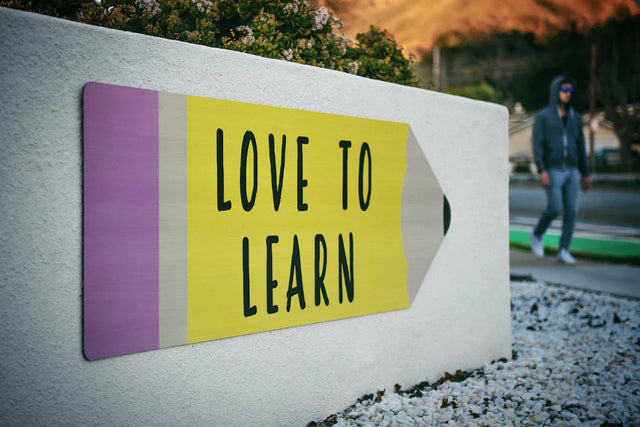Empoderar a poblaciones estudiantiles diversas con prácticas inclusivas
In today's ever-evolving educational landscape, fostering an inclusive vision for diverse student populations is more important than ever. As educators, administrators, and stakeholders, our aim should be to cultivate environments that not only embrace diversity but also leverage it as a powerful force for marketing innovation and success. The challenge lies in understanding how to effectively engage and support a diverse student body while improving outcomes for all. In this article, we will explore actionable strategies, considerations, and best practices that will help pave the way for an inclusive educational experience.
Understanding the Importance of Inclusion
Inclusion in education goes beyond just having policies in place. It's about creating a culture where every student feels valued, respected, and empowered to succeed. Diverse student populations bring unique perspectives, experiences, and skills that enrich the learning environment. These differences can lead to enhanced creativity, problem-solving, and collaboration, translating into a richer educational experience for all. Here's why diversity and inclusion matter:
- Enhanced Learning: Diverse classrooms encourage students to share their perspectives, fostering understanding and empathy.
- Improved Academic Outcomes: Inclusion can contribute to higher engagement and better academic performance among students.
- Preparation for a Diverse Workforce: Students who learn in inclusive environments are better prepared for the global workforce.
- Community Building: An inclusive educational setting promotes stronger relationships between students and staff.
Building an Inclusive Vision: Key Elements
To create a truly inclusive vision for your institution, several foundational elements can be cultivated. Each plays a crucial role in enhancing the overall student experience. Here are some key components to consider:
1. Leadership Commitment
Transforming your educational institution begins at the top. Leaders must demonstrate a steadfast commitment to inclusivity through policies and practices. This includes:
- Articulating a clear mission statement that prioritizes diversity and inclusion.
- Allocating resources to support training and development for staff.
- Establishing diversity committees to drive initiatives and hold stakeholders accountable.
2. Staff Training and Development
Ensuring that educators are equipped to foster an inclusive environment requires ongoing training. Professional development programs should include:
- Cultural competence training to enhance understanding of diverse backgrounds.
- Strategies for engaging and supporting students from all walks of life.
- Effective marketing techniques to promote inclusive practices within the school community.
Engaging with Diverse Student Populations
Effective engagement with diverse student populations requires an intentional effort that encompasses numerous strategies. Here’s how educators can make sure all voices are heard:
1. Tailored Communication
Clear communication is essential in establishing connections with diverse student populations. Institutions should consider:
- Utilizing multilingual communication methods to reach non-native speakers.
- Implementing inclusive marketing strategies that reflect the diversity of the student body.
- Providing accessible information through various channels, including social media, email, and community events.
2. Building Community Connections
Engaging with the local community is vital for fostering inclusivity. Schools can:
- Partner with community organizations to create mentorship programs.
- Host cultural events that celebrate diversity and promote understanding.
- Facilitate discussions about systemic challenges faced by diverse populations.
Creating Culturally Relevant Curriculum
Incorporating diverse perspectives into the curriculum is a powerful way to promote inclusion and engage all students. Here’s how institutions can achieve this:
1. Curriculum Review
Regularly review the curriculum to ensure that it reflects the diversity of the student body. This can involve:
- Integrating literature and resources that feature diverse authors and perspectives.
- Including historical events and contributions from a variety of cultural backgrounds.
- Encouraging critical thinking about societal issues related to diversity and inclusion.
2. Student-Centered Learning
Designing a student-centered curriculum is essential for meeting the needs of all learners. Consider the following practices:
- Promoting project-based learning that encourages collaboration among diverse student groups.
- Providing options for students to engage with material in ways that resonate with their backgrounds and interests.
- Allowing students to explore themes and topics through multiple lenses.
Overcoming Barriers to Inclusion
Even the best intentions can fall short without an understanding of the barriers that students face. Addressing these obstacles is critical:
1. Identifying Systemic Barriers
Systemic barriers can prevent students from feeling included and supported. Institutions need to:
- Conduct surveys and focus groups to identify existing barriers in the school environment.
- Assess policies for equity and accessibility and make necessary adjustments.
- Collaborate with advocacy organizations to better understand issues faced by diverse populations.
2. Providing Support Services
Offering support services can help all students thrive. Important services to consider include:
- Counseling and mental health resources tailored to diverse needs.
- Tutoring and academic support programs that address specific challenges.
- Extracurricular opportunities that support diversity within student life.
Evaluating Success: Metrics for Inclusion
Creating an inclusive environment requires continual evaluation and assessment. Institutions should consider measuring success through:
1. Student Feedback
Gathering input from students is essential in identifying areas for improvement. Methods can include:
- Regular surveys that solicit feedback on inclusivity efforts.
- Focus groups that center around experiences from diverse students.
- Inclusive marketing strategies that involve student participation.
2. Academic Performance Trends
Tracking academic performance can help determine the effectiveness of inclusive practices. Key indicators might include:
- Comparative analysis of academic performance across different groups.
- Graduation and retention rates broken down by student demographics.
- Participation rates in honors programs, extracurricular activities, and support services.
Community, Culture, and Growth
Ultimately, creating an inclusive vision for diverse student populations is about more than just policies and practices; it’s about nurturing a culture that values every individual. By embracing diversity, schools foster rich communities where students not only learn but also grow together. As we continue to implement inclusive practices, let us not forget: the journey towards inclusivity is ongoing, and its success lies in our collective commitment to keeping channels of communication open and staying dedicated to positive change. We can build a brighter future for all learners, one where each voice is celebrated, heard, and valued.





0 Comentarios
No hay comentarios todavía. Sé el primero en comentar.